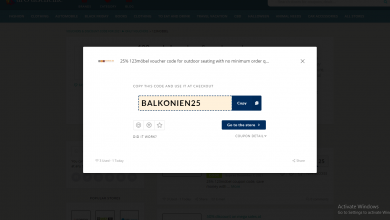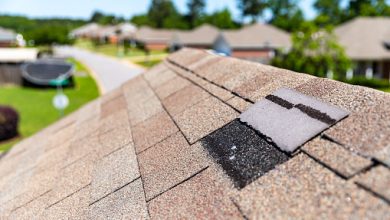Major Guidelines for The procedure of Flow Meter Calibration

The lifespan of a flow meter greatly increases when proper maintenance and regular flow calibration are done. Find out more about proper flow meter calibration in this post.
In industrial processes, any device used for measurement requires flow calibration or recalibration to function properly. The accuracy of measurement devices depends greatly on the calibration done. A good example is when calibrating device uses for measuring flow rate in liquids and gases. Most flow meters have moving parts and components in them. This means that as they continue working, these parts bounds to wear and tear.
Typically, inaccurate flow rate reading prevents if the plant operator examines and calibrates the flow meter. The reading will also be carried in time, which increases productivity and profitability. To find out more about flow calibration and recalibration procedures, continue reading this post.
What is Calibration in Flow Meters?
The process of comparing and testing flow meters to ensure that they produce the desired readings in terms of accuracy and repeatability and it’s a flow meter calibration process. This maintenance activity ensures that flow meters measure flow rate on the set standard of flow rate measurement, which is usually given out. Industrial processes that demand high accuracy levels should use flow meters calibration regularly to ensure that precise measurements maintain or not. Such industries include those that process oil or gas products or any other product that requires safety protections. Most flow meter manufacturers have flowmeter calibration done soon after manufacturing the flowmeter. Some manufacturers will prefer sending their flow meters to an independent calibration facility so that proper flow meter calibration.
Working of Flow meter Calibration
Flowmeter calibration can be done in various ways, depending on the type of flow meter used. Most of the calibration methods ensure that flow meters conform to universal measuring standards. With measuring and adjusting a particular flowmeter so that its reading can match with the master flowmeter. The master flow meter design gives precise and accurate flow rate measurements. In the U.S., for example, the measurement standard is provided by the National Institute of Standards and Technology (NIST). That said, here are the different procedures uses in the calibration process of a flowmeter.
Calibration vs. Recalibration
Flowmeter calibration includes evaluating the measurements of a glide meter in operation to that of a well-known glide size tool beneath neath the identical situations and adjusting the dimensions of the glide meter to be in near settlement with the well-known. Flowmeter recalibration includes calibration of a glide meter that’s already in use. Periodic recalibration is important as glide meter readings will frequently go ‘out of phase’ over the years because of variable situations worried in business processes. The primary distinction among the 2 strategies is that glide calibration finishes earlier than the meter despatch out to use whilst recalibration finishes after the glide meter have been in operation for a whilst. Software gear also uses to confirm the accuracy of measurements after a glide meter has been calibrated.
Flow Meter Calibration Procedures
Master Meter Calibration Procedure
When using the master meter calibration procedure, a certain flowmeter use in the comparison process. The other name of this flow meter is the master meter. Usually, the master flowmeter measures the flow rate according to the desired or set measurement standards. If the calibration flow meter doesn’t match up to the readings given by the master meter. And adjustments will have to be made to ensure those accurate readings measure by the calibration flowmeter. Performing the mater meter calibration requires the following steps:
- The flowmeter requires flow calibration done in series with the master meter.
- The next step is comparing the readings given by both kinds of flow meters.
- Once the readings confirm by carrying out the test several times, the readings adjust to match the master meter.
Gravimetric Calibration Procedure
It is among the cost-effective and most accurate methods of flowmeter calibration. It is an ideal flow calibration procedure for flow meters and uses them in water purification and oil processing industries. Performing the calibration process involves:
- We are placing an aliquot of process fluid in a test meter. While fluid flows within the flow for 60 seconds, the flow meter is heavy.
- The calibrated scale obtains the accurate weight of the test fluid.
- The test fluid diverts into a discharge container when the test process has finished.
- I am dividing the test duration by the volumetric rate if the fluid will provide the volumetric rate of the aliquot.
- After comparing the flow rate of the flowmeter and the calculated flow rate, adjustments change accordingly.
Piston Prover Calibration Procedure
This type of flow calibration involves forcing a known volume of fluid through. The flows meter undergoing calibration tests. A device called the piston prover with a known internal diameter use in the device. The device comes with a piston that uses positive displacement to provide a volumetric flow rate. To obtain a higher level of accuracy, the piston prover procedure of flowmeter calibration uses to calibrate fuel flow meters, ultrasonic flow meters, and turbine flow meters.
Transfer Standard Master Meter Calibration
The calibration of the transfer standard uses a reference flow meter or a reference flow meter. Compares the reference flow with the flow meter when testing under the same conditions. It is important to understand the differences in operating conditions. And Caused by placing different flow meters for testing. Wire. And any changes in temperature or pressure in the liquid. Benchmarks should also have the highest quality, performance and show detailed performance history.
Conclusion
To get the best experience and make your flow meter durable, proper flow calibration must be done regularly. Since several procedures use calibrate flow meters. It is ideal to settle for the best kind of flow calibration procedure that meets your application requirements.





